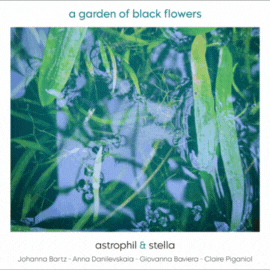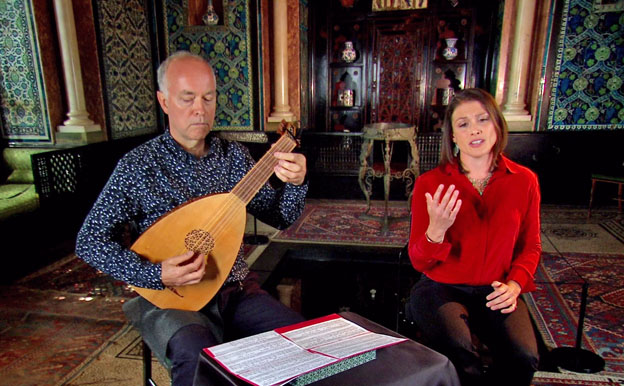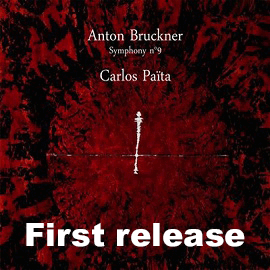The Italian Renaissance has given us great music as well as great art. But the music, particularly the solo songs from the early sixteenth century, have not received the attention they deserve. When they are performed today, they lack vitality, the passion and urgency of their lyrics being poorly served by an overly cautious, stilted and under-expressive performance style. By contrast, five hundred years ago, the art of singing passionately was rooted in oration, and singers modelled their art on that of the orator or actor. This meant that they delivered their lines and rendered their story in a dramatic fashion. A great deal of information on how singers did this survives, and if we embrace principles from the time in our own performances, we can come much closer to bringing Renaissance songs to life in ways that speak as directly to the hearts of people today as they did to listeners of the early sixteenth century.
The words of the song are by none other than Michelangelo, a supreme artist who was also a serious and highly regarded poet. He was part of a circle of Roman friends known as the ‘brigata’, or brood, and a passion for poetry connected the group, which included several other accomplished poets. A drawing survives from the ceremony at the state funeral for Michelangelo held in Florence on the 14th July 1564 that depicts the ‘divine’ artist crowned by Apollo, the god not of the visual arts but of the literary and lyric arts. The drawing quite clearly applauds Michelangelo’s poetic achievements.
Michelangelo wrote the poem, ‘Come harò donque ardire’ (How, then, will I ever have the nerve) during the 1510s when he had just completed the Sistine Chapel ceiling and was creating his celebrated statues of the Rebellious Slave and the Dying Slave. His poem is a classic lover’s lament of unrequited love, in which the poet loses all hope and strength and sinks into resignation and despair. Although the sentiments are conventional enough, they nevertheless convey a remarkable depth of personal feeling.
The composer of the song, Bartolomeo Tromboncino, a singer and lutenist, was one of the leading musicians of his time, a most prolific composer of secular vocal works and solo songs accompanied by the lute. He served the prominent patron, Isabella d’Este as her personal musician until his departure in 1505, when he became a member of Lucrezia Borgia’s court in Ferrara. Isabella corresponded frequently with well-known poets, asking them for their latest works, and she provided an exceptional variety of poems, including those of Petrarch, for Tromboncino and others at her court to set to music. Tromboncino’s setting of ‘Come harò donque ardire’, published in Venice by Andrea Antico in 1520 for voice and lute, gives vivid expression to Michelangelo’s text and remains one of the most affecting works of its kind in the early Italian repertoire.
Our aim in performing the song in Renaissance style is not to strive for antiquarian exactitude for its own sake, but rather to give the song something of its original force and freshness. To re-create that style, we have taken our cues and inspiration from Renaissance musical treatises and related sources. Composers of the time, and Tromboncino was no exception, wrote down their music skeletally. They had no desire (or need) to capture on paper subtleties of rhythm, phrasing, dynamics, tempo, or ornamentation, for they expected singers to personalize the music by supplying those facets of performance that notation could never convey. As a result, the music listeners heard differed considerably from what appeared in print.
By Tromboncino’s day, singers had been using the persuasive speech of orators as a model for quite some time, and in the first instance, vocalists freed themselves from the written page to avoid the sorts of ‘barbarisms’ many composers committed when they transferred the sounds they heard in their heads to paper. Composers of the period, did not bother to spell out expressive details in their scores and because the scores were so minimalist, singers could not treat them too literally. One contemporary writer, Giovanni del Lago, suggested in 1540 that composers who placed short syllables on long notes were not good musicians. Audiences disapproved as well, laughing (Nicola Vicentino said in 1555) at singers who made the mistake of taking the notation at face value. The false accents and emphases modern singers would inadvertently create if they read Tromboncino’s imperfect notation as written requires us to take the same sorts of liberties with the score as performers did in the sixteenth century. This means singing with natural speech rhythms, as well as adding pauses to give listeners time to reflect on what they’ve just heard, varying the tempo according to the emotional character of the text (some emotions require a rapid delivery and others a much slower pace), bending and swelling notes in expressive ways, and adding nuances of emphasis to important words, while relegating unimportant words to what was called ‘relative obscurity’ within the sung line, always ensuring that every syllable came across clearly. We discovered in the process the creation of a wonderful interplay between the voice and the lute, with an irregular vocal rhythm which contrasts expressively with the underlying metric pulse of the song provided by the lute.
These general principles guide us in the video, and Kate Macoboy not only delivers her song with the speech rhythms of an Italian speaker but also adds gestures to her performance, for in the Renaissance movements of the hands and arms did for the listener’s eyes what the voice did for the ears, the two sensory organs through which singers moved the emotions of their audience. Using the score as the skeleton of the song, we went to work putting some much-needed flesh on the bare bones.
The first step was to organize the ideas in the sentences into smaller segments that listeners could grasp easily. With contemporary treatises on rhetoric as our model (yet another parallel between singing and speaking), we separated the thoughts from one another with pauses of varying lengths designed to give our audience adequate time for reflection. Composers rarely notated these blank spaces in their scores, but they certainly expected a singer to add them at the time of performance, for they knew that without an obvious aural structure, ideas would end up jumbled together incoherently. This desire for clarity of expression created a highly articulated style of delivery, one that makes a sharp contrast with the seamless legato that we hear all too often from singers nowadays. This incessant legato, which joins ideas with little concern for the meaning of the text, gradually became the norm in the twentieth century, but for Renaissance music (and up to the 19th century) it is unsuitable and anachronistic. The lute is an ideal complement to the voice for our performance style. It was said of the lute that it ‘speaks well’ and ‘for as the lute is a kind of language, you must imitate the orators’.
Beyond this basic aspect of early sixteenth-century style, we studied Tromboncino’s rhythms to find and eliminate any ‘barbarisms’ he committed when he wrote out the music. One particularly glaring set of problems stood out immediately. Many lines of the poetry end on unaccented short syllables, which Tromboncino, along with most of his compatriots, regularly set to long notes. These errors can be corrected quite simply by shortening the offending notes to appropriate lengths, but on one occasion (the end of the second line – ‘senza voi mai, mio ben, tenermi’n vita’ / ‘without you, my beloved, to keep hold on life’), we decided to weaken the final syllable ‘-ta’ even further by splitting the long last note of the phrase in half. This allows Kate not only to continue the accented syllable (‘vi-’) from the previous note to the first part of the final note, but also to relegate ‘-ta’ to the weak part of the bar as a short note. By paying attention to the prosodic implications of the text, Kate achieves the natural eloquence Renaissance listeners would have expected from singers.
Another opportunity to increase the persuasiveness of the text presents itself in the fourth and fifth lines of the poem ‘Quei singulti, quei pianti e quei sospiri che ‘l miser cor a voi acompagniorno’ (‘Those sobs, those cries, those sighs that accompanied my miserable heart to you’). Michelangelo begins with a kind of reverse ladder, in which each successive word – sobs, cries, sighs – is less urgent, less passionate than the one before. Kate appropriately sings the words in the series with diminishing intensity as she descends the ladder. Further on, the words ‘miser cor’ (‘miserable heart’), particularly the notion of miserableness, need to be brought out. But Tromboncino has given the unimportant word ‘che’ (‘that’) prominence by setting it to a longer note, and so to personalize the music and give ‘miser’ its proper emphasis, Kate shortens the unimportant ‘che’, treating it as a pickup to ‘miser’. She then stresses the accented syllable of ‘miser’ by lengthening the note and swelling on it, before cutting the unaccented syllable short, as in normal speech. Nuances like these occur in every line of the poem.
The video captures the flavour of Renaissance times by drawing on the full range of expressive resources available to singers in 16th-century Italy. Kate Macoboy sings with authentic Italian speech rhythms and with characteristic Italian gestures (which most singers nowadays would consider exaggerated), projecting the words of her song with flair, freedom, and directness. This results in a polished yet passionate performance that personalizes the song to give it new life for a contemporary audience.
The venue for this film is the suitably exotic Arab Hall in Leighton House, London. Its décor evokes the colour and atmosphere of the princely halls of the Italian Renaissance, and since it is about the same size as the rooms in which the song would have been performed in Michelangelo’s time, it also offers an appropriate acoustic. (As the composer Emilio de Cavalieri remarked in 1600, singers needed to force the voice in large rooms to make themselves heard, and this prevented them singing expressively – only in smaller rooms could singers communicate effectively.) The Arab Hall provides a splendid yet intimate setting for a singer and lutenist to express this elegant, heartfelt song.
Robert Meunier, the lutenist and musical director in the video, has been playing and researching early Italian Renaissance song and solo lute repertoire for over thirty years. He has taught the lute, recorded for CD releases with Chandos, CRD and BIS and radio broadcasts, and performed throughout Europe and North America both as a soloist and with specialist ensembles.
Robert Toft, vocal coach, researcher, and author, is one of the world’s leading experts on historically informed approaches to the performance of vocal music from Tromboncino to Rossini.


























